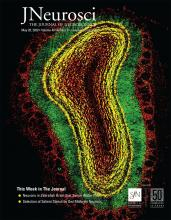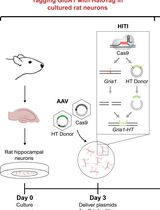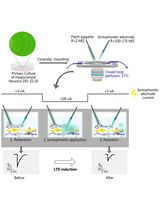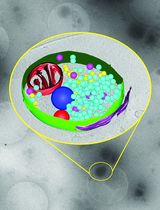- EN - English
- CN - 中文
Preparation of Synaptoneurosomes to Study the Synapse in the Murine Cerebral Cortex
用于研究小鼠大脑皮层突触的突触神经小体的制备
发布: 2021年01月20日第11卷第2期 DOI: 10.21769/BioProtoc.3896 浏览次数: 4353
评审: Oneil Girish BhalalaNarayan SubramanianHong Lian
Abstract
The synapse is a complex structure where the transmission of information takes place. Synaptic dysfunction is one of the earliest pathophysiological events in several diseases, such as traumatic brain injury, cerebral ischemia, and neurodegenerative diseases. Thus, a methodology to study synaptic structure and function is crucial for the development of potential strategies for the treatment of many neurological diseases. Synaptoneurosomes (SNs) are structures assembled by the sealed presynaptic bouton and the attached post-synaptic density. Despite the fact that for a long time it has been recognized that SNs are a powerful tool to study synaptic function, composition, and structure, its use has been limited by the requirement of relatively large amounts of material to successfully isolate them. Here we describe a three-step centrifugation procedure performed under hypotonic conditions to isolate SNs from small volumes of the cerebral cortex.
Graphic abstract
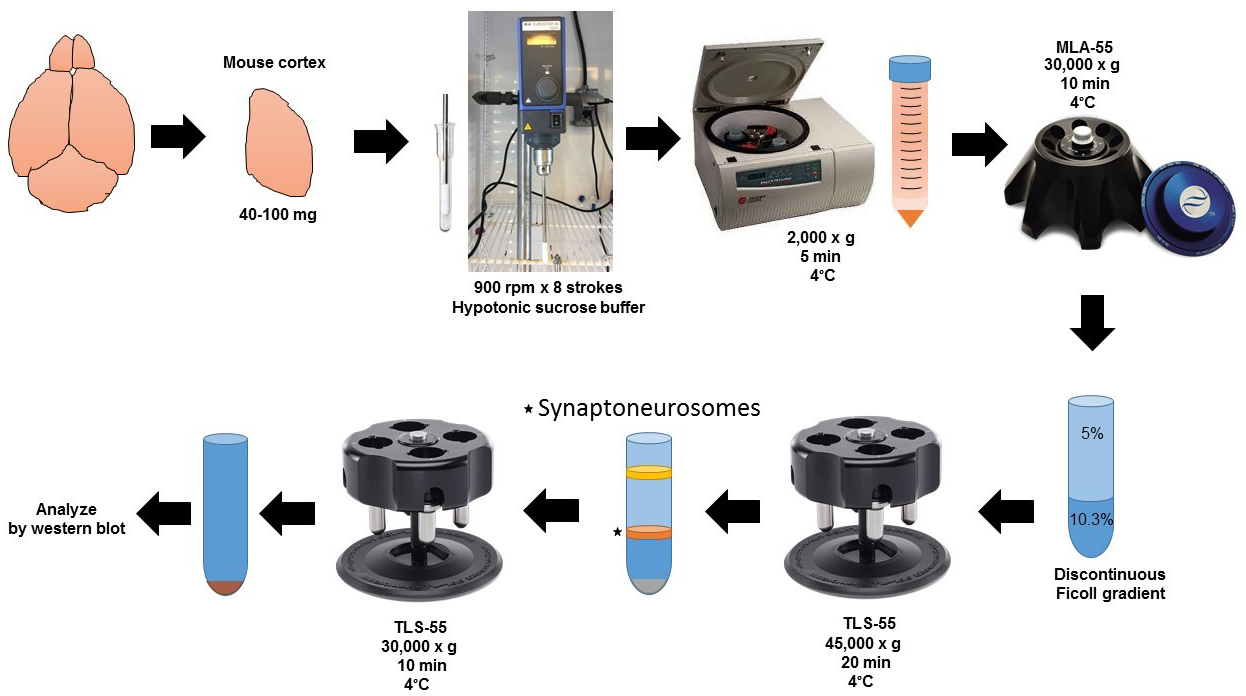
Schematic flowchart for the preparation of synaptoneurosomes.
Background
The synapse is a structure assembled by a presynaptic bouton attached to a postsynaptic terminal and ensheathed by an astrocytic elongation (Halassa et al., 2007). The last decade has witnessed the development of a large number of highly sophisticated techniques to study its structure and function. However, SNs are still used by a large number of investigators because they are relatively easy to isolate and yield valuable information on synaptic structure and function. The preparation of SNs is a modified cell-fractioning procedure that is performed under specific hypotonic conditions, and allows the isolation of the presynaptic boutons and attached postsynaptic elements. In the initial phases of their identification, they were called cell-free responsive preparations because their response to hormones (Chasin et al., 1974; Horn and Phillipson, 1976). This was followed years later by a detailed description of a procedure to isolate a suspension of snowman-shaped structures (synaptoneurosomes) assembled by a sealed presynaptic terminal (synaptosomes) attached to a postsynaptic sac (neurosomes; Hollingsworth et al., 1985). Since then several modifications have been introduced to their preparation, including the use of different hypotonic solutions and rotors (Rao and Steward, 1991; Villasana et al., 2006). However, despite their importance, the use of SNs has been limited by the requirement of relatively large amounts of tissue for their preparation. To address this limitation, here we describe a modified procedure to isolate SNs from small amounts of fresh and frozen brain tissue, and cultured neurons (Diaz et al., 2017 and 2020). This protocol has been used to successfully study the tripartite synapse in neuronal-astrocytic co-cultures (Diaz et al., 2019).
Materials and Reagents
15 ml Conical Centrifuge tubes (any brand)
10 ml, Open-Top Thickwall Polycarbonate tube, 16 x 76 mm (Beckman Coulter, catalog number: 355630 )
2.2 ml, Open-Top Thinwall Ultra-Clear tube, 11 x 34 mm (Beckman Coulter, catalog number: 347356 )
Pipette tips
60 mm cell culture dish (EMD Millipore, catalog number: CLS430589 )
Nitrocellulose Membrane (Bio-Rad, catalog number: 1620112 )
One 8- to 12-week-old mouse
Isoflurane, USP (Piramidal Critical Care, catalog number: 66794-013-25 )
Restore PLUS Western Blot Stripping Buffer (Thermo Fisher Scientific, catalog number: 46430 )
Protease inhibitors, complete tablets EDTA-free EASYpack (Roche, catalog number: 04693132001 )
Phosphatase inhibitors, PhosSTOP EASYpack (Roche, catalog number: 04906837001 )
Rabbit anti-Syntaxin 1 antibody (1:1,000; EMD Millipore, catalog number: AB5820-50UL )
Mouse anti-PSD-95 antibody 6G6-1C9 (1:1,000; Novus Biologicals, catalog number: NB300-556 )
Mouse anti-β-Actin antibody (1:100,000; Sigma-Aldrich, catalog number: A1978 )
Mouse anti-Synaptophysin antibody (1:1,000; EMD Millipore, catalog number: MAB5258 )
Rabbit anti-Histone H3 antibody (1:1,000; Cell signaling, catalog number: 4499 )
IRDye 800CW Donkey anti-Rabbit IgG secondary antibody (1:10,000; LI-COR, catalog number: 926-32213 )
IRDye 680RD Donkey anti-Mouse IgG secondary antibody (1:10,000; LI-COR, catalog number: 926-68072 )
Intercept (TBS) Blocking Buffer (LI-COR, catalog number: 927-60001 )
Mini-PROTEAN TGX Stain-Free Gels (Bio-Rad, catalog number: 4568123 )
Mouse Surgical Kit (Kent Scientific, INSMOUSEKIT)
Sucrose (Fisher Chemical, catalog number: S612 )
Trizma base (Sigma-Aldrich, catalog number: T6066-5KG )
RIPA buffer (TEKnova, catalog number: R3792 )
Phosphate Buffered Saline 10x (Growcells, catalog number: RGF-6235 )
Regular ice
Ficoll (GE Healthcare, catalog number: 17-0300-10 )
100 mM EGTA (see Recipes)
10 mM Tris pH 8.1 (see Recipes)
Homogenization buffer (HB) (see Recipes)
Ficoll solutions (see Recipes)
Discontinuous Ficoll gradient (see Recipes)
Tris-buffer Saline (TBS) 20x (see Recipes)
TBS-Tween (TBS-T) (see Recipes)
Equipment
Micropipettes set
-80 °C freezer
Swinging-bucket clinical centrifuge (Beckman Coulter) or any centrifuge with temperature control compatible with 15 ml tubes
Optima Max-XP ultracentrifuge (Beckman Coulter)
TLS-55 Swinging-Bucket Rotor (Beckman Coulter)
MLS-50 Swinging-Bucket Rotor (Beckman Coulter)
Universal laboratory stirrer IKA EuroStar 60 Digital (Sigma-Aldrich, catalog number: Z766976 )
Potter-Elvehjem Tissue Homogenizer 5 ml (Omni International, catalog number: 07-358034 )
Mini-PROTEAN Tetra Cell for Ready Gel Precast Gels (Bio-Rad, catalog number: 1658005EDU )
Trans-Blot SD Semi-Dry Electrophoretic Transfer Cell (Bio-Rad, catalog number: 1703940 )
Odyssey Fc Imaging System (Li-COR)
Software
ImageStudio v5.2 (Li-COR)
Procedure
文章信息
版权信息
© 2021 The Authors; exclusive licensee Bio-protocol LLC.
如何引用
Readers should cite both the Bio-protocol article and the original research article where this protocol was used:
- Diaz, A. E., Torre, E. and Yepes, M. (2021). Preparation of Synaptoneurosomes to Study the Synapse in the Murine Cerebral Cortex. Bio-protocol 11(2): e3896. DOI: 10.21769/BioProtoc.3896.
- Diaz, A., Merino, P., Guo, J. D., Yepes, M. A., McCann, P., Katta, T., Tong, E. M., Torre, E., Rangaraju, S. and Yepes, M. (2020). Urokinase-type plasminogen activator protects cerebral cortical neurons from soluble Aβ-induced synaptic damage. J Neurosci 40(21): 4251-4263.
分类
神经科学 > 基础技术
神经科学 > 细胞机理 > 突触生理学
细胞生物学 > 细胞器分离
您对这篇实验方法有问题吗?
在此处发布您的问题,我们将邀请本文作者来回答。同时,我们会将您的问题发布到Bio-protocol Exchange,以便寻求社区成员的帮助。
提问指南
+ 问题描述
写下详细的问题描述,包括所有有助于他人回答您问题的信息(例如实验过程、条件和相关图像等)。
Share
Bluesky
X
Copy link


